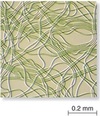Botany Exam 2 Flashcards
(313 cards)
What are algae?
Photosynthetic Protists
How do algae differ from Kingdom Fungi and the fungal-like protists?
They are photoautotrophs.
How do algae differ from Kingdom Plantae?
Their reproductive structures have no protective layer or sterile cells.
What is A?

Oxygen (O2)
What is C?

Water (H2O)
What is B?

Carbon Dioxide (CO2)
What is D and what is it producing?

Sugars
Starch, Oils, and Cellulose
What are the 3 major groups of protists?
Algae, Protozoa, and Fungal-like protists
What are cyanobacteria?
Blue-green “algae”
Not true algae
Have no true nucleus
Are all true algae photosynthetic?
No. Some are non-photosynthetic.
What are protozoa?
Heterotrophs
What is a heterotroph?
An organism that consumes autotrophs for nutrients.
(I.e. Protozoa)
What are fungal-like protists?
Organisms that resemble fungi in body-form and are heterotrophic via absorptive nutrition.
What are phytoplankton?
Photosynthetic plankton.
Often found in oceans, lakes, wetlands and rivers.
Occur primarily as single cells, colonies, or short filaments.
What does the term “Phyto” mean in Latin?
“Plant”
What is a plankton?
Any minute drifting organism inhabiting the pelagic in marine or freshwater.
What does “pelagic” mean?
Any region in a body of water that is not close to the bottom or near to the shore.
What form is this phytoplankton in and what is the genus?

Single cell
Chlamydomonas with flagella
What form is this phytoplankton in? What is the genus? What is the structure that is circled?

Colonial.
Pediastrum
The structure circled is one cell.
These are mainly found in healthy lakes.
What form is this phytoplankton in? What genus is it?

Filamentous protist.
Desmidium
What does the term “benthic” mean?
Bottom
What are included in the benthic algae?
Cyanobacteria, Unicellular Algae, Macroalgae (freshwater), and Macroalgae (marine).
The marine Macroalgae are seaweeds primarily found on the Pacific coasts because of the cool, nutrient-rich waters.
What kind of algae is this and what is the structure (including genus epithet) on it?

Benthic unicellular algea.
It is a diatom (Rhoicosphenia curvata).
What kind of algae is this? What is the genus epithet?

Benthic cyanobacteria
Lyngbya majuscula (marine)



























































































































































